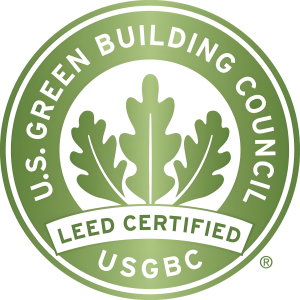How LEED can integrate buildings with healthy outdoor spaces
Feature image: The LEED Platinum Sitka Apartments in Seattle, Washington, bring the natural environment into a residential setting.
For years, the LEED rating system has helped project teams find ways to protect the environment and maximize the health benefits of ecosystem services through green building strategies. Now, as people fatigued from lockdown enjoy the summer season, reopenings are reinforcing the connection between access to outdoor space and public health.
The current pandemic requires people to take extra precautions when going outside, but public health officials also acknowledge how crucial access to nature and outdoor spaces are for our physical and mental well-being. Green spaces are an opportunity to stay physically active, and they also increase our interaction with nature, in turn supporting healthy brain function and behavior.
Associate Professor Marc Berman, who studies how environmental factors can affect behavior at the University of Chicago, put it perfectly in a recent interview: “If a city doesn’t have enough green space for the amount of people who live there, that’s a public health issue…Nature is not an amenity—it’s a necessity.”
LEED and the outdoors
LEED’s Sustainable Sites credit category outlines strategies for integrating a building with surrounding natural ecosystems. It’s an opportunity for project teams to better use existing land or increase access to new green spaces. Here are the LEED credits that recognize the importance of outdoor spaces for new and existing projects:
- Site Assessment: Projects assess site conditions before design, including human use and health effects, in order to evaluate sustainable options and inform related decisions about site design.
- Open Space: Projects create accessible, vegetated outdoor space that encourages interaction with the environment, passive recreation and physical activity.
Link here: https://www.usgbc.org/articles/how-leed-can-integrate-buildings-healthy-outdoor-spaces



